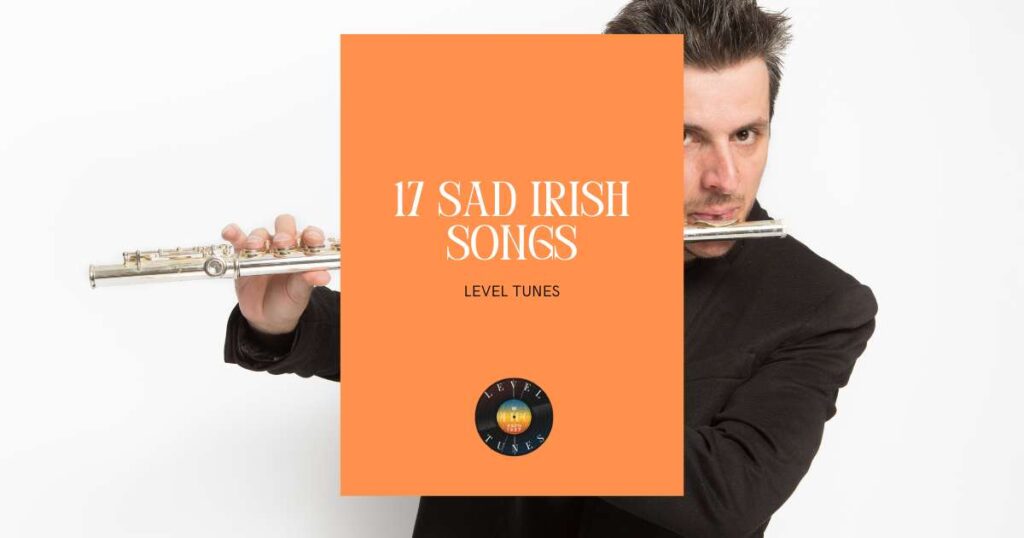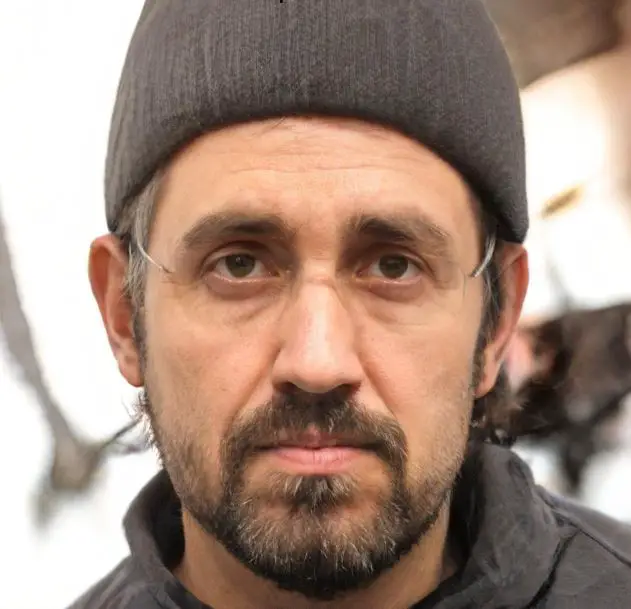17 Sad Irish Songs: Ireland’s Heart in 17 Songs
Hey there, music lovers and fellow DJs! It’s TBone here, the heart and soul behind Level Tunes.
With over 20 years of spinning decks and diving deep into the music industry’s treasures, I’ve developed a profound love for all genres, especially the emotionally rich tapestry of Irish music.
Today, I’m thrilled to share something close to my heart – a carefully curated list of 17 sad Irish songs. These tracks are not just songs; they are stories, emotions, and a journey through the soul of Ireland. I’ve chosen these gems because they resonate deeply with the human experience, something I’ve always been passionate about in my music journey.
Whether you’re a DJ looking to add depth to your sets or a music enthusiast seeking solace, this list is for you. Let’s embark on this emotional voyage together, and explore the beauty of melancholy through the Irish lens.
Here are the sad Irish songs that you can check out:
List Of Sad Irish Songs
Sad Irish songs in a list format:
1. “The Parting Glass” by The High Kings (Album: “The High Kings,” 2008, Universal Music Ireland)
“The Parting Glass” is a traditional Irish folk song, beautifully reimagined by The High Kings on their debut album. Released in 2008 under Universal Music Ireland, this song captures the essence of Irish farewells, combining melancholy with a sense of hope. What I love about this rendition is the harmonious blend of vocals and traditional Irish instruments, creating a poignant goodbye that’s both uplifting and bittersweet. The High Kings bring a modern sensibility to this classic, showcasing their ability to bridge past and present. It’s the kind of song that stays with you, echoing the universal themes of parting and reflection.
2. “Raglan Road” by Luke Kelly (Album: “Luke Kelly with the Dubliners,” 1972, Major Minor Records)
“Raglan Road,” performed by the legendary Luke Kelly of The Dubliners, is a masterpiece of Irish music. The song, which is actually a poem by Patrick Kavanagh set to music, was released in 1972. Kelly’s raw, emotive voice breathes life into Kavanagh’s words, creating a hauntingly beautiful tribute to unrequited love. The reason this song makes my list is Luke Kelly’s unparalleled ability to convey deep emotion, making you feel every word. “Raglan Road” is a testament to Irish musical storytelling, blending poetry and melody in a way that captures the heartache of love lost.
3. “Nothing Compares 2 U” by Sinéad O’Connor (Album: “I Do Not Want What I Haven’t Got,” 1990, Chrysalis Records)
Although not traditionally Irish in its sound, “Nothing Compares 2 U” by Sinéad O’Connor is a powerful ballad that has resonated with audiences worldwide. Released in 1990 on the album “I Do Not Want What I Haven’t Got” under Chrysalis Records, O’Connor’s rendition of the Prince-written song is a raw outpouring of grief and longing. What draws me to this song is O’Connor’s intense emotional delivery, paired with the simple yet impactful arrangement. Her performance in the iconic music video, especially the close-up shot of her teary face, has become emblematic of the song’s depth of feeling.
4. “Danny Boy” by Celtic Woman (Album: “Celtic Woman,” 2005, Manhattan Records)
“Danny Boy” is one of the most iconic Irish ballads, and Celtic Woman’s version, featured on their 2005 self-titled debut album under Manhattan Records, is sublime. Their harmonious vocals and the orchestral arrangement elevate the song’s inherent melancholy, making it a moving tribute to those who have departed. I chose this rendition for its ethereal quality, which showcases the versatility of Irish music, blending traditional and contemporary elements seamlessly. The emotional depth conveyed by Celtic Woman’s performance is a testament to their skill as musicians and the enduring power of “Danny Boy.”
5. “The Fields of Athenry” by Paddy Reilly (Album: “The Fields of Athenry,” 1982, Dolphin Records)
Paddy Reilly’s version of “The Fields of Athenry” is perhaps the most famous rendition of this Irish folk ballad. Released in 1982, the song tells the story of the Great Irish Famine through the eyes of a young man sentenced to transportation to Australia for stealing food for his starving family. Reilly’s emotive voice captures the despair and hope of the Irish people, making it a symbol of resilience. I’m drawn to this version for its authenticity and the way it connects the listener to a pivotal moment in Irish history. The song’s popularity across generations highlights its significance in Irish culture.
6. “Falling Slowly” by Glen Hansard and Markéta Irglová (Album: “The Swell Season,” 2006, Plateau Records)
“Falling Slowly” is a heart-wrenching duet from the movie “Once,” performed by Glen Hansard and Markéta Irglová. Released in 2006 on the album “The Swell Season,” this song won the Academy Award for Best Original Song, a testament to its beauty and emotional depth. The raw, honest lyrics, coupled with Hansard and Irglová’s harmonious blend, create a narrative of love and longing that’s universally relatable. What captivates me is the song’s simplicity; it’s a powerful expression of vulnerability and connection, showcasing the strength of minimalist music.
7. “Black is the Colour” by Christy Moore (Album: “Live at the Point,” 1994, Grapevine Label)
“Black is the Colour” is a traditional folk song that Christy Moore transformed into something uniquely haunting on his “Live at the Point” album, released in 1994. Moore’s version stands out for its simplicity and emotional depth, with his voice conveying a profound sense of longing and love. What draws me to this performance is Moore’s ability to make an old song feel new and deeply personal. His interpretation connects with the listener on an intimate level, showcasing the power of traditional Irish music to convey universal themes of love and loss. The live recording adds an extra layer of authenticity and immediacy, making you feel as though you’re part of the audience, sharing in the collective experience.
8. “Lakes of Pontchartrain” by Paul Brady (Album: “Welcome Here Kind Stranger,” 1978, Mulligan Records)
Paul Brady’s rendition of “Lakes of Pontchartrain” on his 1978 album “Welcome Here Kind Stranger” is a masterclass in storytelling through music. This traditional American folk song, adapted by Brady, tells a poignant tale of unrequited love set against the backdrop of the scenic lakes in Louisiana. Brady’s voice, accompanied by his expert guitar playing, brings a sense of authenticity and emotion that’s hard to match. I chose this song for its beautiful melody and the way Brady’s interpretation makes the narrative come alive. It’s a testament to his skill as a musician and the ability of Irish artists to take a song from another culture and make it their own.
9. “The Lonesome Boatman” by The Fureys (Album: “Banshee,” 1978, Polydor Records)
“The Lonesome Boatman,” performed by The Fureys on their 1978 album “Banshee,” is an instrumental that captures the essence of Irish music’s melancholic beauty. The haunting melody of the tin whistle, played by Finbar Furey, evokes images of a solitary figure against the vast, Irish landscape. This song makes my list for its emotional depth and the way it speaks without words, proving that music can convey feelings and stories as powerfully as lyrics. The Fureys’ rendition is both moving and soothing, a perfect example of the instrumental prowess found in traditional Irish music.
10. “Caledonia” by Dougie MacLean (Album: “Caledonia,” 1978, Plant Life Records)
While “Caledonia” isn’t strictly an Irish song—it’s actually Scottish—Dougie MacLean’s heartfelt ode to his homeland resonates deeply with the themes of longing and belonging that are often found in Irish music. Released in 1978, “Caledonia” has become an anthem for Scots around the world, yet its universal message of returning to one’s roots appeals to anyone who’s ever felt homesick. MacLean’s tender vocals and the song’s simple, evocative melody make it a timeless classic. I included it in this list because of its profound emotional resonance and its ability to connect with the listener on a deeply personal level, much like the best of Irish music.
11. “Ride On” by Christy Moore (Album: “Ride On,” 1984, WEA Records)
“Ride On,” the title track from Christy Moore’s 1984 album, is a song that embodies the spirit of Irish folk music. Moore’s delivery of Jimmy MacCarthy’s lyrics creates an atmosphere of mystery and longing, with the horse as a metaphor for life’s journey. What I find compelling about this song is its combination of simplicity and depth, allowing Moore’s expressive voice to carry the emotional weight. “Ride On” is a favorite among fans for its poetic lyrics and Moore’s ability to evoke a sense of wanderlust and introspection. It’s a song that encourages you to reflect on your own path, making it a timeless piece in the world of folk music.
12. “Grace” by Jim McCann (Album: “Grace & Other Irish Love Songs,” 1996, Dolphin Records)
“Grace” is a song that tells the tragic love story of Grace Gifford and Joseph Plunkett, set against the backdrop of the 1916 Easter Rising in Ireland. Jim McCann’s rendition, featured on his album “Grace & Other Irish Love Songs,” released in 1996, is particularly moving. McCann’s emotive voice captures the poignancy of the couple’s story, making it a powerful ode to love and sacrifice. I chose this song for its historical significance and the way it beautifully conveys a deeply personal story within a larger national context. “Grace” is not just a song; it’s a piece of Irish history, told through the lens of love.
13. “The Island” by Paul Brady (Album: “Back
to the Centre,” 1986, Mercury Records)
“The Island” by Paul Brady, from his 1986 album “Back to the Centre,” is a poignant critique of the violence in Northern Ireland, wrapped in the metaphor of a love song. Brady’s insightful lyrics, combined with his powerful vocal delivery, offer a profound reflection on the conflict and the longing for peace. What draws me to this song is its ability to address complex social issues through the lens of personal relationships, showcasing Brady’s skill as a songwriter. The melody is hauntingly beautiful, and Brady’s performance is both tender and impassioned, making “The Island” a standout track that transcends its political context to speak to the universal desire for harmony and love.
14. “From Clare to Here” by Ralph McTell (Album: “Right Side Up,” 1976, Warner Bros. Records)
“From Clare to Here” is a song by English singer-songwriter Ralph McTell, but it has become a beloved part of the Irish folk repertoire, thanks to its storytelling and emotional resonance. The song, featured on McTell’s 1976 album “Right Side Up,” captures the experience of Irish emigrants working in England, dealing with themes of displacement and longing for home. McTell’s gentle voice and the song’s melancholic melody convey the bittersweet reality of the emigrant’s life. I included this song for its poignant narrative and McTell’s ability to capture the essence of the Irish spirit, despite being an outsider to the culture. It’s a testament to the universal appeal of Irish music and its capacity to tell deeply human stories.
15. “Spancil Hill” by The Dubliners (Album: “Further Along,” 1996, Baycourt Records)
“Spancil Hill,” performed by The Dubliners on their 1996 album “Further Along,” is a traditional Irish ballad that tells the story of a dream in which the narrator finds himself back in his homeland of Spancil Hill, County Clare. The Dubliners’ rendition is both nostalgic and deeply moving, with their characteristic folk instrumentation and harmonies bringing the song’s vivid imagery to life. This song captures the essence of longing for home and the pain of emigration, themes that are recurrent in Irish music. I chose “Spancil Hill” for its timeless quality and the way The Dubliners’ version connects with the diaspora’s collective memory and longing for Ireland.
16. “The West’s Awake” by The High Kings (Album: “Friends for Life,” 2013, Sony Music)
“The West’s Awake” is an anthemic song performed by The High Kings on their 2013 album “Friends for Life.” This song, with its rousing melody and powerful lyrics, is a call to remember and celebrate the spirit of the Irish west. The High Kings’ harmonies and the vibrant instrumentation make it a modern classic, imbuing the historical song with a new energy and relevance. I admire this rendition for its ability to inspire and uplift, reminding listeners of Ireland’s rich cultural heritage and the enduring strength of its people. “The West’s Awake” stands out for its dynamic arrangement and the High Kings’ passionate performance, making it a perfect closer to any collection of Irish songs.
17. “Carrickfergus” by Van Morrison and The Chieftains (Album: “Irish Heartbeat,” 1988, Mercury Records)
“Carrickfergus” is a traditional Irish folk song that Van Morrison and The Chieftains brought to life on their collaborative album “Irish Heartbeat” in 1988. This version stands out for its emotional depth and the seamless blend of Morrison’s soulful voice with The Chieftains’ authentic Irish instrumentation. The song is a poignant reflection on life, love, and longing, set against the backdrop of the historic town of Carrickfergus. What makes this rendition special is the way it captures the essence of Irish musical tradition while infusing it with Morrison’s unique vocal style. The collaboration highlights the song’s timeless beauty and its ability to evoke a deep sense of nostalgia and yearning.
Fun Facts: Sad Irish Songs
“The Parting Glass” by The High Kings
- Fun Fact: “The Parting Glass” is often sung at the end of a gathering of friends in Ireland and Scotland, serving as a farewell song. It has a long history, dating back to the 17th century, and has been covered by numerous artists, but The High Kings’ version is celebrated for its harmonious arrangement and emotional delivery, bringing a contemporary feel to this timeless classic.
“Raglan Road” by Luke Kelly
- Fun Fact: “Raglan Road” was originally a poem written by the renowned Irish poet Patrick Kavanagh. The story goes that Kavanagh was inspired to write the poem after falling in love with a young woman named Hilda Moriarty. Luke Kelly of The Dubliners turned the poem into a song after Kavanagh himself suggested he put it to music, creating one of the most iconic Irish folk songs.
“Nothing Compares 2 U” by Sinéad O’Connor
- Fun Fact: Prince originally wrote “Nothing Compares 2 U” for one of his side projects, The Family. However, it was Sinéad O’Connor’s heart-wrenching rendition that catapulted the song to global fame in 1990. The music video, featuring a close-up of O’Connor’s face as she sings and eventually tears up, is one of the most memorable music videos of all time and significantly contributed to the song’s emotional impact.
“Falling Slowly” by Glen Hansard and Markéta Irglová
- Fun Fact: “Falling Slowly” won the Academy Award for Best Original Song in 2008, a highlight of the indie film “Once.” The song’s success helped launch the musical careers of its performers, Glen Hansard and Markéta Irglová, beyond their native Ireland and the Czech Republic, respectively. Interestingly, the song was almost deemed ineligible for the Oscar because it had been performed live before the movie’s release, but it ultimately was allowed to compete and won.
“Grace” by Jim McCann
- Fun Fact: “Grace” tells the true story of Grace Gifford and Joseph Plunkett’s tragic love. Joseph Plunkett was one of the leaders of the 1916 Easter Rising in Ireland and was executed for his role in the rebellion. The couple was married in Kilmainham Gaol just hours before Plunkett’s execution. This song has become an anthem of sorts in Ireland, capturing the personal tragedies behind the country’s fight for independence. Jim McCann’s version is particularly revered for its emotional depth and storytelling.
“Carrickfergus” by Van Morrison and The Chieftains
- Fun Fact: “Carrickfergus” is one of the most beloved Irish folk songs, with origins that are somewhat mysterious, blending elements of Irish and Scottish traditional music. The collaboration between Van Morrison and The Chieftains on “Irish Heartbeat” brought together two of Ireland’s musical powerhouses. This album is celebrated not only for its beautiful renditions of traditional Irish songs but also for how it showcased the potential for traditional and contemporary Irish music to blend seamlessly.
As we journey through the heartache and beauty of these 17 sad Irish songs, we find a rich tapestry of emotion and storytelling. Each track offers a unique glimpse into the soul of Ireland, blending history, love, and longing into melodies that stay with us long after the music ends.
Thanks for reading.
TBone




